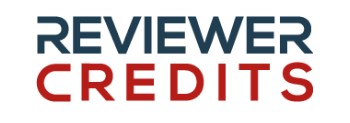Efficacy and Safety of Salicylic Acid (20%) Chemical Peel Solution in Treatment of Moderate
DOI:
https://doi.org/10.56056/amj.2019.75Keywords:
Doxycline 100 mg capsule, Erbil, Metronidazole gel 0.75%, Moderate rosacea, Salicylic acid 20%Abstract
Background and objectives: Rosacea is a chronic skin disorder characterized by persistent facial erythema, tel- engectesia, inflammatory papules and pustules, facial flushing. This study aimed to evaluate the clinical effectiveness of 20% salicylic acid chemical peel in comparison to combined effect of oral doxycline 100mg capsule and topical metronidazole 0.75% gel in the treatment of moderate rosacea.
Methods:An open label comparative therapeutic trial which has been done at Erbil Dermatology Teaching Center outpatient clinic during the period from March of 2017 to January 2018 on forty patients with moderate rosacea. Full history and clinical examinations were done for every patient. Patients were randomly allocated to two groups: group A underwent salicylic acid chemical peeling every 3 weeks for a series of four sessions using 20% salicylic acid and group B received oral doxycline 100mg capsule and topical metronidazole 0.75% gel once daily for a series of 12 weeks. Treatment efficacy was assessed at last session according to IGA score of rosacea.
Results: Forty patients; their age ranged from 23 to 68 years. Before treatment, all patients in both treatment groups were classified as having a moderate grading of rosacea. At the last visit, according to investigator’s global assessment, treatment success in terms of a clear, or mild final result was obtained in a significantly larger proportion of those patients treated with 20% salicylic acid group compared with doxycline capsule and topical metronidazole gel.
Conclusions:The findings in our study indicated that 20% salicylic acid peel is more efficacious in treatment of moderate rosacea than combined doxycline 100mg capsule and metronidazole 0.75% gel. Also chemical peel is easier to use and has less cost.
Downloads
References
Powell F, Raghallaigh S. Rosacea and Related Disorders. Bolognia Dermatology.3rd edition. United States: Elsevier Saunders; 2012. 561- 9.
Berth-Jones J. Rosacea, Perioral Dermatitis and Similar Dermatoses, Rook’s Text Book of Dermatology, 7th ed. Italy: Blackwell. 2004. 2075- 91.
Tan J, Leyden J, Cribier B, et al. Development and evaluation of a rosacea screening instrument (Rosascreen). J Cutan Med Surg. 2016; 20:317–22.
Pelle M. Rosacea. Fitzpatrick’s Dermatology in General Medicine. 7th ed; Mac Graw- Hill, New York: 2008. 918-25.
Picardo M, Eichenfield L, Tan J. Acne and Rosacea. Dermatolgy and Therapy. 2017;7:43-52.
Thiboutot D, Thieroff-Ekerdt R, Graupe K. Efficacy and safety of azela- ic acid (15%) gel as a new treatment for papulopustular rosacea: re- sults from two vehicle-controlled, randomized phase III studies. Journal of the American Academy of Dermatology. 2003 1; 48(6):836-45.
Tosti A, Padova M, Venturo N, Vincenzi C. Salicylic acid peeling in the treatment of rosacea. Journal of the American Academy of Dermatolo- gy. 2004;50(3): 72.
Ejaz A, Raza N, Iftikhar N, Muzzafar F. Comparison of 30% salicylic acid with Jessner’s solution for superficial chemical peeling in epider- mal melasma. J Coll Physicians Surg Pak. 2008;18(4):2058.
Arif T. Salicylic acid as a peeling agent: a comprehensive review. Clinical, cosmetic and investigational dermatology. 2015;8:455.
Valentín S, Sánchez J. Safety and efficacy of doxycycline in the treatment of rosacea. Clinical, cosmetic and investigational dermatol- ogy. 2009;2:129.
Schaller M, Almeida L, Bewley A. Rosacea update: recommenda- tions from the global rosacea consensus (ROSCO) panel. British Journal of Dermatology. 2017; 176: 465–71.
Weinkle AP, Doktor V, Emer J. update on the management of rosa- cea. Clin Cosmet Investig Dermatol. 2015; 8:159–77.
Elewski BE, Draelos Z, Dreno B et al. global diversity and optimized outcome: proposed international consensus from the rosacea interna- tional expert group. J Eur Acad Dermato Venerol. 2011; 25:188–200.
Maddin S. A comparison of topical azelaic acid 20% cream and topical metronidazole 0.75% cream in the treatment of patients with papulopustular rosacea. Journal of the American Academy of Derma- tology. 1999 ;40(6):961-5.
Elewski BE, Fleischer AB, Pariser DM. A comparison of 15% azelaic acid gel and 0.75% metronidazole gel in the topical treatment of papu- lopustular rosacea: results of a randomized trial. Archives of dermatol- ogy. 2003;139(11):1444-50.
Zip C. An update on the role of topical metronidazole in rosacea. Skin Therapy Lett. 2006;11(2):1-4.
Miyachi Y, Imamura S, Niwa Y. Anti-oxidant action of metroni- dazole: a possible mechanism of action in rosacea. Br J Dermatol. 1986;114(2):231-4.
Breneman D, Bucko A, Friedman D, et al. Evaluation of topical met- ronidazole lotion in rosacea. American Academy of Dermatology. 1998. P289.
Costa I, Mesquita K. Treating papular nodular lesions of rosacea with a medium chemical peel. Surg Cosmet Dermatol 2010; 2(3):237-9
Garg VK, Sinha S, Sarkar R. Glycolic Acid Peels Versus Salicylic– Mandelic Acid Peels in Active Acne Vulgaris and Post Acne Scarring and Hyperpigmentation: A Comparative Study. Dermatologic Surgery. 2009; 1;35(1):59-65.
Downloads
Published
Issue
Section
License
Copyright (c) 2023 Vian Jalal Hamad, Ali Mozan Elethawi

This work is licensed under a Creative Commons Attribution-NonCommercial-ShareAlike 4.0 International License.
The copyright on any article published in AMJ (The Scientific Journal of Kurdistan Higher Council of Medical Specialties )is retained by the author(s) in agreement with the Creative Commons Attribution Non-Commercial ShareAlike License (CC BY-NC-SA 4.0)













